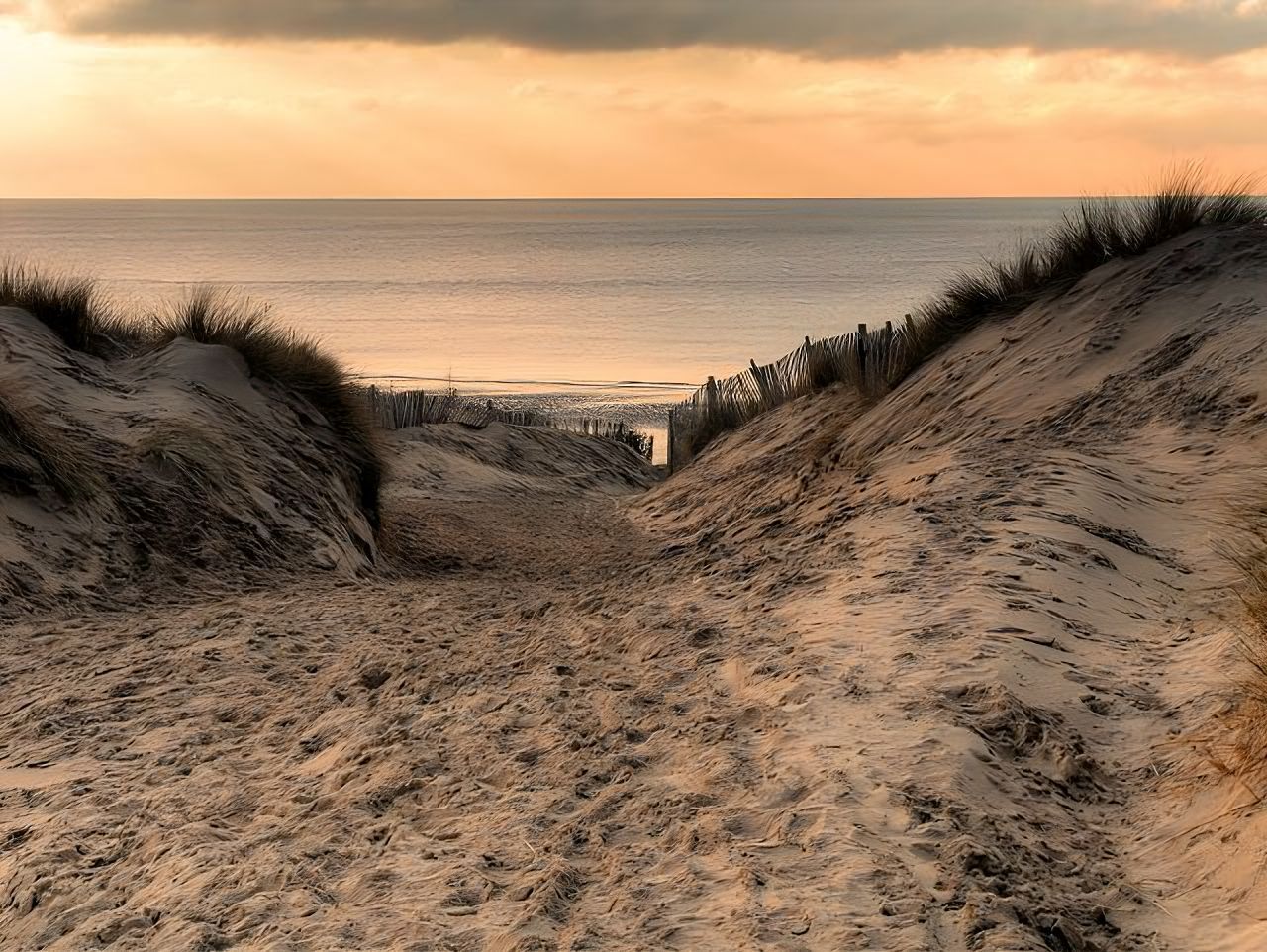Wind dropped Shirdley Hill Sand across a vast swathe of land in the millennia since the last glaciation. The sand lies along the Sefton Coast several kilometres inland, and has created dunes up to 75m (246ft) tall.
The sandy Sefton coast has attracted humans for centuries. The beaches on this coast are the location of prehistoric footprints. Shirdley Hill Sand was used for industry from at least the 1920s and 1930s, carrying on until 1970. This led to widespread erosion of this part of the coast, which only halted recently.
The sandy soils make the area suitable for links golf courses. The West Lancashire Golf Club (Crosby), Formby Ladies Golf Club, Hillside Golf club and Royal Birkdale are all on the Sefton coast.
Today, the coast is a Site of Special Scientific Interest, and a National Nature Reserve. It is home to many species of wetland vegetation, as well as animals such as the natterjack toad, sand lizard and red squirrel.
In 2008, the area was part of Wessex Archaeology‘s Liverpool Bay Pilot Area for their Historic Seascapes Project as part of the national Historic Landscape Characterisation (HLC) scheme. HLC tells us about the historic nature of landscapes across the country, and so helps with conservation and planning.
Further Reading
- Ainsdale Sand Dunes National Nature Reserve – leaflet by Natural England, accessed 8th December 2022
- Sands of Time – a website about the Shirdley Hill Sand dunes on the Sefton Coast, Liverpool Hope University, accessed 8th December 2022
- Ancient footprints reveal ‘Irish Sea Serengeti’, BBC News, accessed 8th December 2022
Image: Path to the Beach at Formby, by David Ward (Creative Commons, Geograph)
